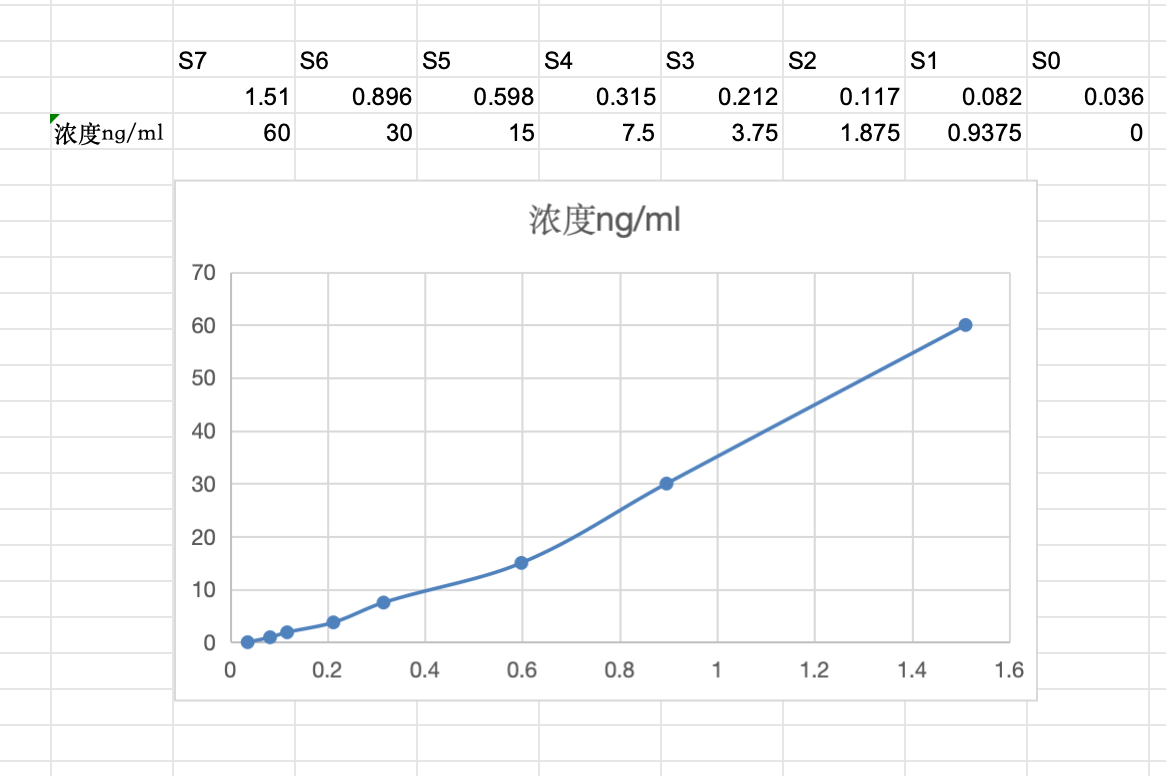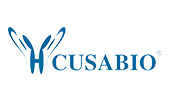-
中文名称:小鼠肾损伤分子1(Kim-1)酶联免疫试剂盒
-
货号:CSB-E08809m
-
规格:96T/48T
-
价格:¥3800/¥2500
-
其他:
产品详情
-
产品描述:
CUSABIO's Kim-1 mouse ELISA kit is an in vitro enzyme-linked immunosorbent assay for the quantitative measurement of mouse Kim-1 in serum, plasma, tissue homogenates, or urine. This assay uses an antibody specific for mouse Kim-1 coated on a 96-well plate. Kim-1 present in a sample is bound to the wells by the immobilized antibody after adding the sample into the wells. Biotinylated Kim-1 antibody is added to the wells, forming an antibody-analyte-antibody complex. HRP-conjugated avidin is pipetted to the wells and binds to the complex. A TMB substrate solution is added to the wells and color develops in proportion to the amount of Kim-1 bound. The addition of Stop Solution changes the color from blue to yellow, and the intensity of the color is measured at 450 nm using a microplate reader.
Kim-1 (HAVCR1) is most highly upregulated in the proximal tubular epithelium in acute and chronic kidney injury. Kim-1 functions as a phosphatidylserine receptor that recognizes and internalizes apoptotic cells and also acts as a scavenger receptor that mediates the uptake of modified low-density lipoprotein and necrotic-cell debris. A large amount of Kim-1 protein is also released into the urine, making it a useful urinary biomarker for kidney injury. In the immune system, Kim-1 is also involved in activating the differentiation of Th1, Th2, and Th17. And Kim-1 is also considered as an activating receptor in B cells, dendritic cells, and natural killer T cells.
-
别名:Havcr1 ELISA Kit; Kim1 ELISA Kit; Tim1 ELISA Kit; Timd1 ELISA Kit; Hepatitis A virus cellular receptor 1 homolog ELISA Kit; HAVcr-1 ELISA Kit; Kidney injury molecule 1 ELISA Kit; KIM-1 ELISA Kit; T cell immunoglobulin and mucin domain-containing protein 1 ELISA Kit; TIMD-1 ELISA Kit; T cell membrane protein 1 ELISA Kit; T-cell immunoglobulin mucin receptor 1 ELISA Kit; TIM-1 ELISA Kit; CD antigen CD365 ELISA Kit
-
缩写:HAVCR1
-
Uniprot No.:
-
种属:Mus musculus (Mouse)
-
样本类型:serum, plasma, tissue homogenates, urine
-
检测范围:0.9 ng/mL-60 ng/mL
-
灵敏度:0.225 ng/mL
-
反应时间:1-5h
-
样本体积:50-100ul
-
检测波长:450 nm
-
研究领域:Microbiology
-
测定原理:quantitative
-
测定方法:Sandwich
-
精密度:
Intra-assay Precision (Precision within an assay): CV%<8% Three samples of known concentration were tested twenty times on one plate to assess. Inter-assay Precision (Precision between assays): CV%<10% Three samples of known concentration were tested in twenty assays to assess. -
线性度:
To assess the linearity of the assay, samples were spiked with high concentrations of mouse Kim-1 in various matrices and diluted with the Sample Diluent to produce samples with values within the dynamic range of the assay. Sample Serum(n=4) 1:1 Average % 93 Range % 87-99 1:2 Average % 92 Range % 88-98 1:4 Average % 96 Range % 90-101 1:8 Average % 95 Range % 92-99 -
回收率:
The recovery of mouse Kim-1 spiked to levels throughout the range of the assay in various matrices was evaluated. Samples were diluted prior to assay as directed in the Sample Preparation section. Sample Type Average % Recovery Range Serum (n=5) 93 89-97 EDTA plasma (n=4) 94 88-99 -
标准曲线:
These standard curves are provided for demonstration only. A standard curve should be generated for each set of samples assayed. 
ng/ml OD1 OD2 Average Corrected 60 2.356 2.345 2.351 2.183 30 1.786 1.725 1.756 1.588 15 1.264 1.236 1.250 1.082 7.5 0.813 0.801 0.807 0.639 3.75 0.513 0.489 0.501 0.333 1.8 0.378 0.363 0.371 0.203 0.9 0.267 0.251 0.259 0.091 0 0.170 0.166 0.168 -
数据处理:
-
货期:3-5 working days
引用文献
- Novel ASO therapeutic target designed against hyperlipidemia via PCSK9 knockdown X Yu,Biomedicine & pharmacotherapy,2023
- Modulation of TLR4/NF-Modulation of TLR4/NF-κB, Nrf2/HO-1 and PI3K/Akt signaling by cilostazol mitigates lipopolysaccharide-induced septic acute kidney injury AF Mohamed,/,2023
- Imatinib and methazolamide ameliorate COVID-19-induced metabolic complications via elevating ACE2 enzymatic activity and inhibiting viral entry Zilun L,Cell Metabolism,2022
- Trimethylamine N-oxide promotes hyperoxaluria-induced calcium oxalate deposition and kidney injury by activating autophagy F Dong,Free Radical Biology and Medicine,2021
- UCP2 ameliorates mitochondrial dysfunction, inflammation, and oxidative stress in lipopolysaccharide-induced acute kidney injury Ding Y, et al,International Immunopharmacology,2019
- Telluric Acid Ameliorates Endotoxemic Kidney Injury in Mice: Involvement of TLR4, Nrf2, and PI3K/Akt Signaling Pathways Mohamed AF.et al,Inflammation,2017
相关产品
靶点详情
-
功能:May play a role in T-helper cell development and the regulation of asthma and allergic diseases. Receptor for TIMD4. May play a role in kidney injury and repair.
-
基因功能参考文献:
- findings show that TIM1 is not required for hepatitis A virus (HAV) replication and pathogenesis in permissive strains of mice, although it may facilitate early stages of infection by binding phosphatidylserine on the quasi-enveloped HAV surface PMID: 28874468
- findings provide evidence for the role of Tim-1 in the induction of a cytokine storm phenomenon and the pathogenesis of Ebola virus disease PMID: 28951472
- Cisplatin enhances kidney injury molecule-1 (Kim-1) gene expression in kidney S3 cells. PMID: 27591740
- By preventing ERK1/2 phosphorylation following renal injury, STAT3 phosphorylation is decreased, leading to less phosphorylated STAT3 within the nucleus, and subsequently less KIM-1 mRNA increases post injury PMID: 29074644
- Study used a previously described highly mobile membrane mimetic membrane in combination with a conventional lipid bilayer model to generate a membrane-bound configuration of Tim1 in silico, identified two possible states for a membrane-bound form of Tim1. PMID: 28978444
- Our data reveal a previously unknown role for Galpha12 in regulating efferocytosis and that renal tubular epithelial cells require KIM-1 to mediate this process. PMID: 26697979
- Urinary L-FABP, NGAL, Kim-1 and albumin levels increased during the acute phase of kidney injury and were significantly correlated with the degree of tubulointerstitial fibrosis during the chronic phase. These markers could detect higher risk of progression to CKD. PMID: 27028054
- Blockade of Tim-1 changes Th1/Th2 balance and reduces circulating regulatory T cells to enhance atherosclerosis in LDL receptor knockout mice. PMID: 26821944
- Our results suggest that KIM-1 is an endogenous protective mechanism against renal ischemia-reperfusion injury PMID: 25759266
- data suggest that TIM-1 signaling plays a direct role in Breg maintenance and induction both under physiological conditions (in response to ACs) and in response to therapy through TIM-1 ligation PMID: 25645598
- Deletion of the mucin domain impaired KIM-1-mediated phagocytic function, resulting in increased proinflammatory cytokine production, decreased antiinflammatory growth factor secretion by proximal epithelial cells, and an increase in tissue macrophages. PMID: 25751064
- Tim-1 is critical for maintaining self-tolerance by regulating IL-10 production in Bregs PMID: 25582854
- blood biomarker that specifically reflects acute and chronic kidney injury PMID: 24904085
- Tim-1 expression was lower in a herpes simplex virus-induced Behcet's disease (BD) mouse model compared to that in asymptomatic BD normal (BDN) mice. PMID: 24453431
- Tim-1-Fc protects cardiac grafts from chronic rejection by suppressing CD4 Th17 development and functionality. PMID: 24551271
- KIM-1 shedding is accelerated by worsening renal cellular injury, and excess soluble KIM-1 competitively inhibits efferocytosis. PMID: 24829508
- Endogenous Tim-1 promotes severe systemic autoimmunity and renal disease MRL-Fas(lpr) mice. PMID: 24623145
- a major P-selectin ligand with a role in T cell trafficking during inflammatory responses and the induction of autoimmune disease PMID: 24703780
- Sustained KIM-1 expression promotes kidney fibrosis and provides a link between acute and recurrent injury with progressive chronic kidney disease. PMID: 23979159
- We defined a novel pathway in which TIM-1, a receptor for phosphatidylserine expressed by apoptotic cells, drives the development of asthma by sensing and responding to injured and apoptotic airway epithelial cells. PMID: 23672783
- TIM-1 expressing CD4 T cells are required in the mechanism of innate immune-mediated hepatic IRI in OLTs PMID: 23137033
- Tim-1 plays a critical role in maintaining suppressive regulatory B-cell function, while it's mucin domain plays an unexpected role in regulating Breg function and maintaining self-tolerance. PMID: 22773818
- Endogenous Tim-1 promotes Th1 and Th17 nephritogenic immune responses and its neutralization reduces renal injury while limiting inflammation in cell-mediated glomerulonephritis. PMID: 22205357
- Tim-1 functions in pathways that suppress recruitment of inflammatory cells into the airways and the generation or activity of CD4+ T cells. PMID: 22144095
- Tim-1 expression declined in Helicobacter pylori infection. PMID: 21923683
- Data show that in vivo in mice, TIM-1 is predominantly expressed on B rather than T cells, and is an inclusive marker for IL-10+ Bregs that can be induced by TIM-1 ligation. PMID: 21821911
- Tim1 and Tim3 are not essential for the induction of the type-2 response in lung allergy. PMID: 21470319
- mAb stimulation on dendritic cells regulates the balance between effector and regulatory T cells and induces Experimental autoimmune encephalitis PMID: 21469101
- The TIM-1:TIM-4 pathway enhances injury after renal ischemia-reperfusion injury and may be a therapeutic target. PMID: 21355054
- These results suggest that TIM-1 signaling in B cells augments antibody production by enhancing B cell proliferation and differentiation. PMID: 21303660
- results suggest that TIM-1 serves as a pattern recognition receptor on NKT cells that senses PtdSer on apoptotic cells as a damage-associated molecular pattern PMID: 20889552
- Tim-1 is induced on germinal centre B cells through BCR signaling. PMID: 20518819
- TIM1 is an endogenous ligand for LMIR5. PMID: 20566714
- Late upregulation of KIM-1 and NGAL could be a useful marker for sustained renal injury after acute kidney injury. PMID: 20181666
- TIM1 costimulation on hepatic natural killer T cells enhances cellular production of interleukin (IL)-4 while inhibiting the production of interferon (IFN)-gamma. PMID: 20220086
- TIM-1 regulates not only T for the role of cell activation but may also affect macrophage function in the local inflammation response. PMID: 20091883
- protective effects of hepatitis A virus on atopic disease depends on a common TIM-1 allele PMID: 14534576
- TIM-1 is a molecule that costimulates T cell activation PMID: 15793575
- TIM-1-TIM-4 interaction is involved in regulating T cell proliferation PMID: 15793576
- TIM-1 is expressed on CD4+ T cells of the lung-draining lymph nodes after intranasal immunization and plays a role in T cell activation and differentiation. PMID: 16284246
- These results explain the divergent immune functions described for the murine receptors and the role of TIM-1 as a cell adhesion receptor in renal regeneration and cancer. PMID: 17363299
- The Ig domains of murine TIM1, 3 and 4 display calcium-dependent binding to carbohydrate ligands expressed by murine splenocytes and non-murine cell lines. Both homo- and heterotypic interactions were observed for binding between the TIM proteins. PMID: 17513880
- Tim-1 regulates T cell responses and can alter T cell function depending on the affinity/avidity with which it is engaged. PMID: 17606630
- In vivo abrogation of TIM-4 or its cognate ligand TIM-1 by using a polyclonal antibody remarkably dampened Th2 differentiation and intestinal allergy. TIM-4 as a novel molecule critically required for the development of intestinal allergy. PMID: 17915221
- Ligation of Tim-1 in vitro effectively deprogrammed Tregs and thus produced Tregs unable to control T cell responses. PMID: 18079964
- TIM-4 and TIM-1 are immunologically restricted members of the group of receptors whose recognition of PS is critical for the efficient clearance of apoptotic cells and prevention of autoimmunity. PMID: 18082433
- These studies define previously unknown functions of TIM-1 in regulating alloimmune responses in vivo . PMID: 18172549
- These results demonstrate that TIM-1 is significantly increased in pulmonary tissues and PBMCs in asthmatic mice after ovalbumin challenge, and that the production of TIM-1 as well as GATA-3 is upregulated in the spleen of asthmatic mice. PMID: 18234236
- Ligation of Tim-1 in the presence of mature dendritic cells triggers polyclonal T cell activation. PMID: 19155484
- Results demonstrate that targeting T cell Ig and mucin domain-1 (Tim-1) with anti-Tim-1 overcomes transplantation tolerance resistance. PMID: 19528638
显示更多
收起更多
-
亚细胞定位:Membrane; Single-pass type I membrane protein.
-
蛋白家族:Immunoglobulin superfamily, TIM family
-
组织特异性:Expressed by stimulated T-cells. Expressed during primary antigen stimulation.
-
数据库链接:
Most popular with customers
-
-
-
Human Complement factor H-related protein 3(CFHR3) ELISA kit
Detect Range: 31.25 ng/mL-2000 ng/mL
Sensitivity: 7.8 ng/mL
-
-
-
-
Human Ecto-NOX disulfide-thiol exchanger 2(ENOX2) ELISA kit
Detect Range: 31.25 pg/mL-2000 pg/mL
Sensitivity: 7.81 pg/mL
-
Human Fibroblast growth factor 20(FGF20) ELISA kit
Detect Range: 12.5 pg/mL-800 pg/mL
Sensitivity: 3.12 pg/mL




















